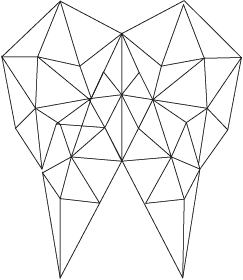The sinus lift
-Definition
: It is a bone graft by elevation of the membrane of the floor of the maxillary sinus.
-Goal
: Increased bone volume for implant placement.
-Anatomic locating
: The 2 maxillary sinuses are cavities, filled with air, lined with a "respiratory" membrane, located under the nasal cavities (with which they communicate at the level of the middle meatus), facing the cheeks.
-Indication
: Insufficient bone height, <5 mm, between the bony crest and the sinus floor (sinus floor)
-Scanner preoperatively
: Mandatory (location of the alveolo-antral artery)
-An absolute indication
: Those of surgery; immunocompromised patients, high risk heart disease.
-Contraind indications
: Chronic or acute, inflammatory or purulent sinusitis, obstruction of the middle meatus, which will be treated by the ENT
-Premedication
: Antibiotic, anti-inflammatory, anti-haemorrhagic.
-Operative technique
: Under local anesthesia, incision and detachment of the gingiva, in order to obtain a lateral approach of the bone wall of the maxillary sinus.
Opening of a bone window, raised from the sinus membrane 0.3 to 0.8 mm thick, bone biomaterial filling (bone of animal origin) between the bone floor of the sinus and the ceiling of the sinus thus constituted by the sinus membrane.
Closure of the window by an animal collagen membrane, then sutures of the gum.
-Physiological principle
: Bone formation from an osteoconductive bone (xenograft) and the blood flow containing osteoblasts (cells responsible for bone formation) during a "healing" time of 4 to 6 months.
- Forensic aspect
: Information and informed consent of the patient on the technique, alternatives, and biomaterials used, are mandatory.
-Duration of the intervention
: From 1 to 2 hours depending on volume and anatomic complexity (multiple lobes, intra sinus sinus septa)
-Operative leaks
: Very few reactions in general.
Possibility of edema, slight hematoma, or slight nosebleeds. Sensitivity or allergy to very rare biomaterials, due to the high degree of purity of biomaterials.
-Postoperative precautions
: Do not blow your nose on both nostrils, do not sneeze the mouth closed, to avoid any pressure between the maxillary sinus and nasal cavities.
-Security of biomaterials
: The risk associated with the use of biomaterials of animal origin is to develop Creutzfeld Jacob disease due to the prion. The prion is destroyed between 600 and 800 ° C. The bone substitute material that leads regeneration and bone growth is sterilized for more than 15H at very high temperature ( 1000 ° C)
It is in the form of granules 0.25 to 1 mm in diameter in a sterile bottle and double sterile packaging. It is coupled with sterilized vegetable bone.
The collagen membrane is also of animal origin.
These two materials of animal origin are subject to the international standards ISO 9001 and EN 46001.
These are medical devices that meet the safety requirements of US and European public health authorities (CE and FDA certified).




